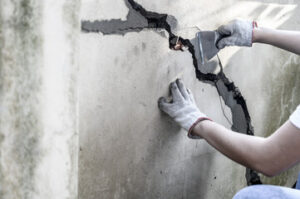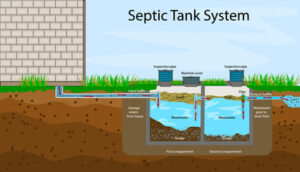Doctors of optometry typically recommend prescription eye drops and ointments, warm compresses and lid massage, and a higher intake of fluids. For patients with severe dry eye, more invasive measures may be needed, such as scleral lenses that rest on the cornea above the eyelid and are filled with soothing fluid. For more information, contact your local Baltimore Eye Physicians.

Over-the-Counter Solutions
Many people can manage mild dry eye symptoms with over-the-counter artificial tear solutions, especially those that contain natural ingredients like flaxseed oil. Look for preservative-free drops that come in single, one-use vials to prevent contamination.
If these don’t help, talk to your eye doctor about prescription brands. These typically offer more concentrated formulas that lubricate the eyes longer. For those with more serious dry eye, there are also prescription medications to boost tear production and reduce inflammation. Oral cyclosporine (Restasis, Cequa) or lifitegrast (Xiidra) may be recommended.
Another option that can provide rapid relief to some patients is autologous serum, or blood-derived serum. These drops contain a mix of growth factors, proteins, antioxidants, and lipids, and for some people are an effective alternative to artificial tears. However, this treatment is not for everyone, so make sure your eye physician is familiar with it before trying it. It is important to work with your family health care provider and an ophthalmologist throughout the process, and to ask lots of questions.
Home Remedies
The most common causes of dry eye are either that your eyes don’t produce enough natural tears or that the oil layer in the tear film is out of balance due to blepharitis (an inflammation of the glands that produces these oils). Home remedies for dry eye can include artificial tears, both unpreserved and preserved. These can be used as a substitute for natural tears and help with redness, itching or discomfort. If you’re suffering from a severe case of dry eye, your doctor may prescribe prescription drops that stimulate tear production or reduce inflammation. Your doctor may also recommend a medication that can be taken orally, like cyclosporine (Restasis, Cequa) or lifitegrast (Xiidra).
You can reduce your risk of developing dry eye symptoms by staying hydrated and eliminating trigger foods. You can also try adding omega-3 fatty acids to your diet, which can be found in oily fish such as salmon, sardines and tuna or in flaxseeds.
Your doctor can also recommend a humidifier for your home, particularly in the winter. This adds moisture to the air and can help relieve dry eye symptoms, especially when they are caused by cold weather or central heating.
Getting enough sleep can help, as well. Studies have shown that not getting enough sleep can decrease tear secretion and lead to the formation of epithelial defects in the cornea.
Other lifestyle changes that can reduce your chances of developing dry eye symptoms include avoiding second-hand smoke, limiting your use of contact lenses, and taking frequent breaks from electronic devices. You can also try using a warm compress on your eyes, and washing your eyelashes regularly to remove debris that can cause dryness.
While these at-home remedies may provide some relief from mild and temporary cases of dry eye, you should see a qualified doctor to find the root cause of your symptoms and get treatment that will be effective. They can also determine if you’re suffering from an underlying condition, such as MGD, which requires a different treatment regimen. If you’re suffering from a serious condition, such as an autoimmune disease, your doctor can change your medications to better control your symptoms.
Medications
Professional eye specialists are typically divided into three different groups – optometrists, ophthalmologists and opticians. Each has a distinct role to play in the management of eye care, but they work together to ensure you get the best treatment for your eyes.
Optometrists are trained to diagnose and treat common vision issues like nearsightedness, farsightedness and astigmatism. They can also prescribe corrective lenses like glasses and contacts. Depending on your specific needs, they may also prescribe eye drops for conditions like dry eye syndrome.
A comprehensive eye exam includes a thorough assessment of your tear film, or the natural layer of water, oil and mucus that keeps the surface of your eye moist. The eye doctor will also take into account your overall health, including your diet and other conditions that can contribute to dryness in the eye.
Medicated eye drops are available over-the-counter and can provide relief from mild symptoms of dry eye. They can also help restore moisture to the cornea and underlying eye tissues. For more severe symptoms, NYU Langone ophthalmologists recommend cyclosporine, which is sold under the brand name Restasis. This anti-inflammatory medication decreases inflammation of the lacrimal gland, which helps produce tears. The drops are administered twice daily and can take weeks or months before you begin to see results.
An optometrist or ophthalmologist can also prescribe topical corticosteroids, which are used in short-term doses to relieve the redness, swelling and itching that occur with inflammation caused by a lack of tear production. Xiidra, Restasis and other topical corticosteroids are prescribed by doctors at NYU Langone to help patients with autoimmune conditions such as Sjogren’s syndrome or systemic lupus erythematosus that can cause an inflammation of the lacrimal gland. They can also be used to treat ocular surface disease, such as keratitis (red eye) or pterygium, which is a benign growth on the cornea that causes itching and pain.
Surgery
In some cases, eye physicians may recommend or perform surgery to correct a condition that is causing pain or limiting the ability to see. They may repair a retinal tear, for example, or replace fluid with silicone oil or saline. They might also use a laser to reshape the cornea or remove a cataract. Most eye surgeries require anesthesia, but a patient’s preference and the type of procedure determine the kind of anesthesia used.
Generally, eye doctors prefer to use topical anesthesia (drops or gel) for quick procedures. Depending on the type of procedure, though, it might be necessary to administer general anesthesia, especially for children and those with traumatic or major orbital injuries or for patients who are particularly apprehensive. A physician or anesthesiologist administering the anesthesia, or a nurse or anesthetist with training in eye anesthesia, monitors a patient’s heart rate and blood pressure. Sterile precautions are taken, including the use of antiseptic cleaning solutions and sterile drapes and gowns.
For some procedures, eye doctors use a specialized lens to correct the problem at hand. PRELEX, or presbyopic lens exchange, is a refractive surgery that uses a multifocal implant to reduce nearsightedness and farsightedness by changing the way the eye focuses light onto the retina. In this case, the doctor creates a small incision to remove the natural lens of the eye and replace it with an artificial one.
Other surgical options include a cornea transplant, in which the doctor replaces a damaged cornea with healthy donor tissue; or glaucoma surgery to lower eye pressure. In a trabeculectomy, the eye surgeon creates a tiny hole in the white of the eye to allow extra fluid to drain out, which decreases pressure in the eye.
When it comes to DED, Galor investigates the underlying causes of the pain or discomfort. “We try to find out if it’s nociceptive or neuropathic, if there is an activation of the nerves on the surface of the eye,” she says. She also looks for comorbidities that might contribute to the pain, such as fibromyalgia and chronic migraines.








